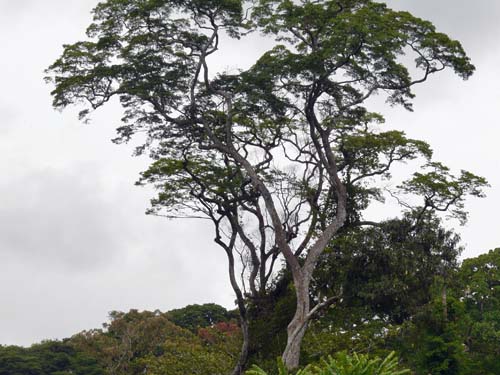Zebrawood Hardwood

Zebrawood is an exotic hardwood native to the Western African countries of Cameroon and Gabon. It is a hard wood, with a medium to coarse texture. The Zebra-like appearance is due to the light colored sapwood in contrast with the dark colored grain. Zebrawood is excellent for wood turning, veneer, furniture, pens, and knife handles. It works and finishes fairly, and has good gluing properties.
Common Name(s): Zebrawood, Zebrano
Scientific Name: Microberlinia brazzavillensis
Distribution: West Africa
Tree Size: 65-130 ft (20-40 m) tall, 4-5 ft (1.2-1.5 m) trunk diameter
Average Dried Weight: 50 lbs/ft3 (805 kg/m3)
Specific Gravity (Basic, 12% MC): .67, .81
Janka Hardness: 1,830 lbf (8.160 N)
Modulus of Rupture: 17,800 lbf/in2 (122.8 MPa)
Elastic Modulus: 2,374,000 lbf/in2 (16.37 GPa)
Crushing Strength: 9,210 lbf/in2 (63.5 MPa)
Shrinkage: Radial: 7.6%, Tangential: 10.8%, Volumetric: 17.8%, T/R Ratio: 1.4
Color/Appearance: Heartwood is a light brown or cream color with dark blackish brown streaks vaguely resembling a zebra’s stripes. Depending on whether the wood is flatsawn or quartersawn, the stripes can be either chaotic and wavy (flatsawn), or somewhat uniform (quartersawn).
Grain/Texture: Has a fairly coarse texture and open pores. Grain is usually wavy or interlocked.
Endgrain: Diffuse-porous; medium pores in no specific arrangement; solitary and radial multiples of 2-3; deposits (brown) occasionally present; growth rings distinct due to marginal parenchyma; rays not visible without lens; parenchyma banded (marginal), apotracheal parenchyma diffuse-in-aggregates, paratracheal parenchyma vasicentric, aliform (winged or lozenge), and confluent.
Rot Resistance: Heartwood is rated as durable and is also resistant to insect damage.
